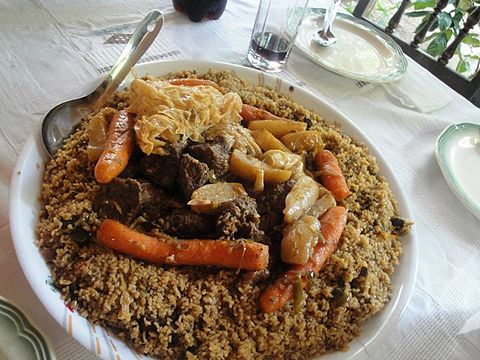
23 May 5 Types of West African Rice for Africa Day
A West African party without rice screams sacrilege. West Africans’ love for Rice dates back over 1,500 years, when wild African rice grew in what is now the Western Sahara. As history has it, the Sahara was once much wetter than the dry expanse it is now, which created the perfect conditions for native African rice to thrive. Over the years, as the Sahara became drier, cultivation of the native African rice crop retreated to the Upper Niger River, now known as Mali, and subsequently spread to the rest of West Africa. The Dyula trades people of Mali introduced small-scale rice cultivation to parts of West Africa (Ghana, Senegal and Nigeria) along their routes.
Although Jollof rice is a popular West African dish, there are other traditional rice dishes that are just as important to the culture, economy and, of course, the parties. In most West African countries, a rich tomato stew, groundnut/peanut butter stew or a peppery soup is enjoyed with rice, and best believe in each country no stews are the same.
RELATED: How the Diaspora is Reconnecting to Africa Through Food
In honor of Black Restaurant Week’s celebration of Africa Day, check out this list highlighting a few beloved rice-based dishes from various West African cuisines.
Thieboudienne
During the French colonization of Senegal, native rice fields were destroyed to make way for peanut oil production, which was a lucrative venture for the West at the time. As a result, broken rice from Asia was imported into Senegal. To this day, broken rice is the preferred rice used in making the famous Thieboudienne, the national dish of Senegal and the ‘Godfather’ of Jollof. The dish is bursting with flavor, as a savory, smoked fish is marinated with herbs and deep fried, then cooked in a tomato based sauce with vegetables like carrots, green/red pepper, cassava, potatoes and eggplant. BJ Dennis, a Gullah Geechee culinary historian, says signature dishes like Red Rice may have descended from Thieboudienne.
RELATED: Preserving Gullah Geechee Food & Culture with Chef Gregory “Gee” Smalls
Angwa Mo
Quick and easy to make, Angwa Mo is an oiled fried rice. Some say it’s so simple, a kid could make it as an after school snack, as could a bachelor or bachelorette with little kitchen know-how. According to the African Food Network, you start by frying onion in oil, letting it brown, then adding water and letting the rice cook in the water-oil mixture. “It is mostly served with earthenware-ground pepper,” they write, “with either tinned sardines or fried eggs complementing it.
Kwen Kwen / Shinkafa / Omu Tuo
This dish changes names from region to region. In Nigeria it’s called Shinkafa, though it’s sometimes spelled Chinkafa. In Ghana it’s Kwen Kwen or Omu Tuo. Made from native African brown rice then pounded or rolled into sticky balls, some describe it as a rice fufu. The use of brown rice makes it gluten free. It can be cooked in a smoked fish or tomato broth, similar to Jollof rice, or eaten with groundnut soup or palm nut soup. According to 196flavors, people in the Hausa-Fulani territories often eat it with baobab leaf and a dried okra soup called miyan kuka.
Liberian Rice Bread
Those who love banana nut bread will be obsessed with Liberian rice bread. It’s primary ingredients are mashed banana (or plantain) and either cream of rice or rice flour. Combined with the baking basics – butter, eggs, baking soda, etc. – and a little grated ginger, the batter produces an incredibly moist bread that can maintain its moisture for a full week. It’s often served with tea or coffee.
Riz Gras

Riz Gras is a “stick to your ribs” kind of dish. The French translation is “fat rice,” as it’s plumped up by heavy amounts of peanut oil that will keep diners full for hours. Though it’s considered part of the Burkinabé cuisine of Burkina Faso, it’s popular in other countries across the continent as well, like Senegal and Guinea. It can be dressed up with various types of meat and vegetables, like eggplant, cabbage and carrots.


Pingback:Egyptian Cuisine 101 - Black Restaurant Week
Posted at 10:59h, 24 May[…] RELATED: 5 Types of West African Rice […]
Pingback:Africa Day Takeover - Black Restaurant Week
Posted at 11:39h, 24 May[…] 5 Types of West African Rice (Article) […]
Pingback:The Best African & Caribbean Restaurants in Boston - Black Restaurant Week
Posted at 15:47h, 09 June[…] RELATED: 5 Types of West African Rice […]
Pingback:Follow Your Fork: Authentic Nigerian Food with Houston's Jollof Rice King - Black Restaurant Week
Posted at 12:04h, 20 June[…] and culinary connections between Africa and the Diaspora? We’ve got this breakdown of 5 different types of West African Rice, a primer on the basics of Egyptian cuisine and watch this video of a traditional Ethiopian Coffee […]
Pingback:5 of the Best Ethiopian Restaurants in the U.S - Black Restaurant Week
Posted at 08:29h, 23 September[…] RELATED: 5 Types of West African Rice […]